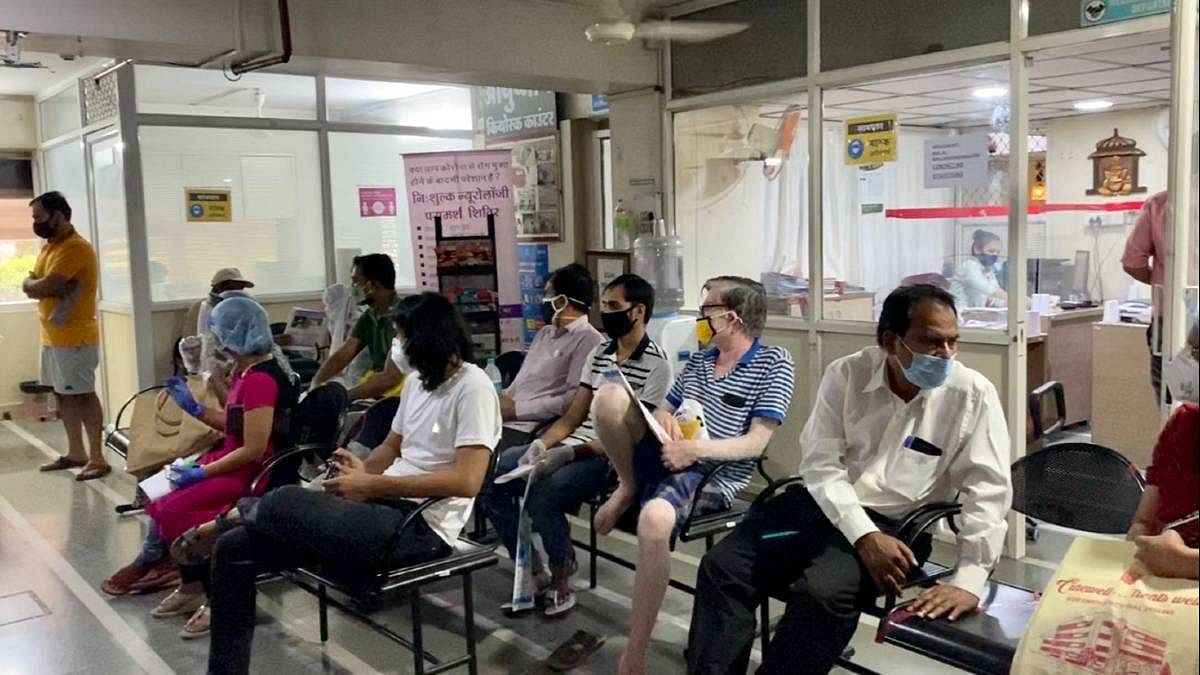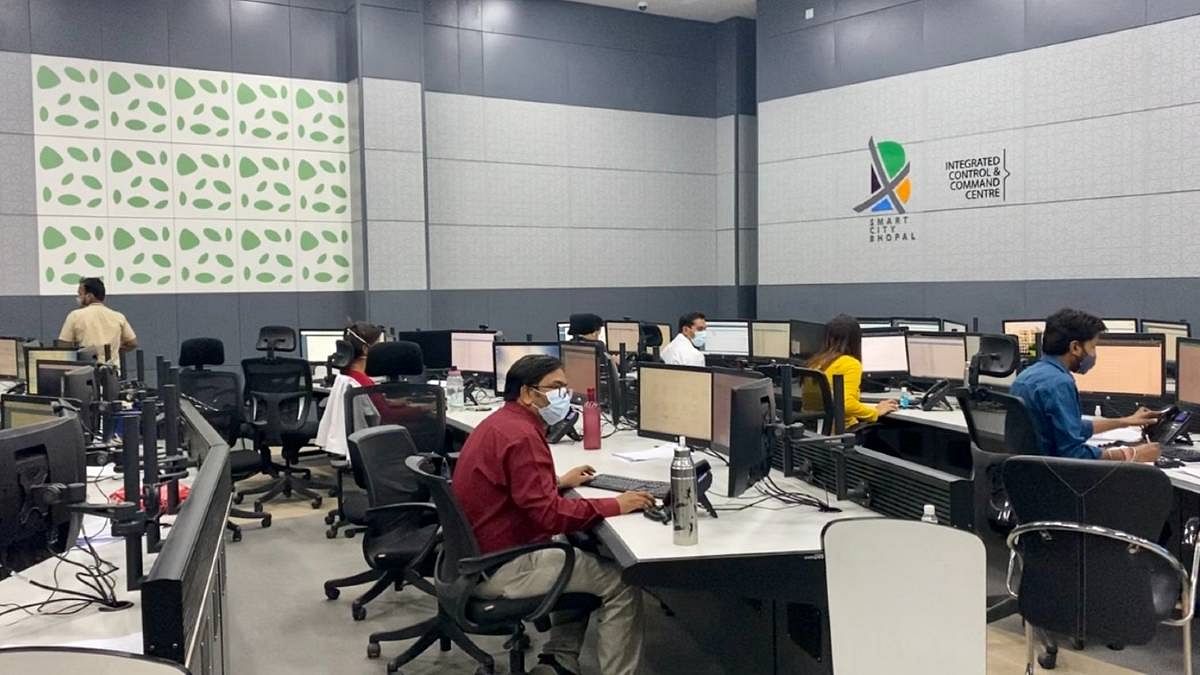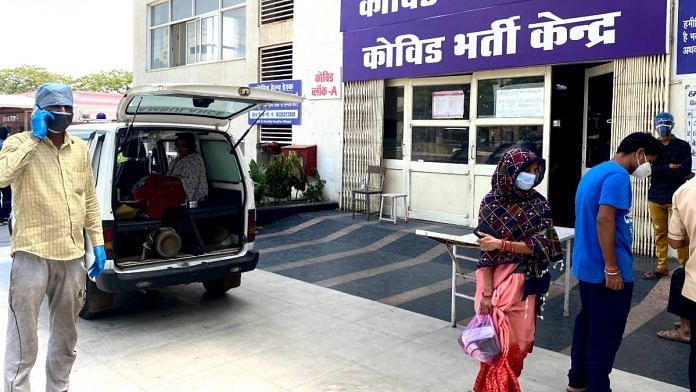Indore/Bhopal: Madhya Pradesh has laid out an elaborate protocol for Kumbh returnees. There is a helpline to report travel history, symptoms and mandatory two-week home quarantine for all. But much of this remains only on paper. Nobody picks up the helpline, there is no data on the returnees, making monitoring of those home-quarantining impossible.
And unlike states like UP, Odisha and Karnataka, Madhya Pradesh doesn’t require them to take mandatory tests.
Bhopal and Indore are the state’s two worst-hit districts, making up over 37 per cent of the state’s caseload of Covid infections. In terms of daily cases, they stand shoulder to shoulder, but deaths have been significantly higher in Indore. According to the state health bulletin, on 22 April, MP reported 12,384 cases and 75 deaths, taking the total tally up to 4,54,332 and 4,863 respectively.
Despite such staggering figures and the fear of the Kumbh Mela being a super-spreader, Medical Education Minister Vishwas Sarang says the state doesn’t “believe that whoever is returning from the Kumbh has been infected with Covid-19. This is unnecessary speculation”.
Also read: ‘Double mutant, triple mutant, Bengal lineage’ — Covid variants driving India surge decoded
Home-quarantine for Kumbh returnees
Guidelines for Kumbh returnees were put in place by Chief Minister Shivraj Singh Chouhan, following the death from Covid of a pilgrim in Jabalpur on 17 April. Reports suggested he had received the second dose of the vaccine just before leaving for the Kumbh Mela in Haridwar.
Collectors in districts across the country have been instructed to ensure proper monitoring of those who have returned. However, protocols being followed in Bhopal and Indore differ.
“Once we get the information of a returnee being symptomatic, our dedicated team of municipal corporation workers ensures they are tested and isolated at home,” Bhopal District Magistrate Avinash Lavania told ThePrint, adding that it remains unclear how many people have actually returned till now.
Meanwhile, around 250 kilometers away, in Indore, a list of returnees is being prepared. “Our rapid response team will ensure that they home quarantine. They will first be tested, immediately upon arrival, and those who develop symptoms will be tested again,” Dr Amit Malakar, Indore Nodal Officer said, underlining that it is too soon to say if this [the Kumbh] will add to the surge.
Conversations with doctors in both districts have revealed stricter screening and quarantining of Kumbh returnees is the only way to curb the spread of Covid.
“We have already reached the stage of community spread. Our healthcare infrastructure is already overburdened. Kumbh returnees have to home isolate, there is no other option,” Dr Sanjay Dixit, dean, Mahatma Gandhi Memorial Medical College, Indore, told ThePrint.
Also read: Fighting Covid? Learn from the armed forces as nearly 100% personnel vaccinated already
Ravaged by the new strain
Bhopal’s Jai Prakash hospital — one of the Covid treatment centres here — wears a desolate look.
At the entrance to the hospital’s A block stand Rajeev Dham and his daughter Ritika. The two seem too stunned even for tears. A few feet away, on a stretcher, lies the barely covered body of Rajeev’s wife. One of her hands, and part of her hair, have slipped out from under the plastic sheet that covers the body.
“We have been to six hospitals since the morning — Narmada hospital, AIIMS, Bansal Hospital, among others — everyone refused entry to my ailing mother. They kept telling us there were no beds,” Ritika told ThePrint, even as she broke down in tears.
Rajeev was too shattered for words and only managed to say, “I hope no one else has to suffer what I have been through. I hope my story helps others avoid similar pain.”
According to data shared by Bhopal’s Covid control room, the district has 6,884 hospital beds across 93 hospitals. Eighty-six per cent of these are occupied at present. In comparison, Indore has 7,600 hospital beds, according to the nodal officer, of which 90 per cent are occupied. Health department officials blame the new, more virulent strain of the virus for the staggering number of patients.

“How the virus has evolved and how it now affects people differently is a universal problem. At present, the aim is to contain the spread of the virus and continuously enhance our healthcare system,” Lavania said.
Bhopal and Indore sent a total of 972 samples for genome sequencing [450 in the last one year, and the rest in the past two months]. Of the 876 samples which had been processed, 56 had double mutation, while 44 tested positive for the UK variant.
Indore-based medical practitioner, and a whistleblower in the Vyapam scam, Dr Anand Rai said that the number of samples being sent for genome sequencing was very few. “At least five per cent of the total number of cases should be sent for sequencing, but that isn’t happening,” Rai told ThePrint.
On 22 April, Indore reported 10 deaths, according to the state health bulletin, the highest in the state and double the casualty in Bhopal.
“Many people come in from Delhi, Maharashtra and other parts of the country carrying different strains of the virus. The district also has a high population density. Any minor mutation can happen, and any outside deadly mutation can be replicated very easily,” Dr Ravi Dosi, pulmonologist at Sri Aurobindo hospital, Indore, told ThePrint.
Lack of awareness, resulting in delayed testing and hospitalisations, is also a major concern, since people are only getting admitted once they are critical, pushing the demand for oxygen and ventilators, said doctors.
“In the infected, the lungs are getting affected very quickly. But people are not seeking treatment on time. The government has tried very hard to explain to the public how important it is to follow social distancing, but no one paid attention and today we are paying the price for that,” Dr B.S. Setya, Chief Medical Health Officer, Indore told ThePrint.
Also read: This is how Modi govt will decide Covid vaccine quota for states
Underreporting of deaths
Indore and Bhopal, together accounted for 36.4 per cent of the deaths in the state as per the state health bulletin of 22 April. But all it takes is a look at the data from one crematorium in Bhopal to realise the extent of underreporting on casualties.
On 19 April, Bhopal recorded five coronavirus deaths, according to the state health bulletin. But on the same day, 83 bodies of those who had succumbed to Covid, were cremated at the Bhadbhada crematorium in Bhopal. Fifty-five of these bodies were from Bhopal, according to the crematorium staff.
The crematorium usually has a staff strength of 24-25, but an additional 12-15 daily wage workers were hired a month ago to manage the increased load, said crematorium employee, Mamtesh Sharma. The crematorium’s capacity to burn bodies was increased from 18-20 per day to 50 daily, he added. Some of the bodies were even being burned on makeshift pyres on the ground, owing to lack of space.
“The electrical pyres each have a capacity for cremating four bodies per day. But around seven to eight are being burnt daily at each pyre now. Typically, there should be a 30 minutes to an hour’s gap between cremation, but owing to the pressure, we are unable to maintain this. The pipe, which supplies heat to the pyre, is turning red because it’s being used continuously,” Sharma told ThePrint.
The Jhada graveyard in Bhopal is also handling a similar burden. Daily Covid-19 deaths ranged between 7-10, between 16 and 20 April, according to Rehan Golden, in-charge of the graveyard. This is far higher than what the bulletin recorded for these dates, an average of one-five deaths. In Indore too, deaths are being severely underreported.
Also read: ‘Mahamanav, warrior’ — how BJP leaders describe PM Modi for Covid effort as his govt faces flak
‘Too late for contact tracing’
There is barely any room to sit in Bhandari Hospital’s waiting room in Indore, as entire families come in together, complaining of Covid-19 symptoms.
“It is no longer just a single patient. Everybody is getting infected. Contact tracing is very important, but it is no longer effective,” said Dosi. He has treated over 2,500 Covid-19 patients in the past year.
However, there lacks a consensus among doctors about the efficacy of contact tracing in helping arrest the spread of the virus.

In early April, as the country faced the second Covid-19 wave, Prime Minister Narendra Modi told chief ministers across the country that at least 30 contacts of every infected person should be traced. However, the two biggest cities in MP are tracing far fewer than the stipulated number. Bhopal has been contact tracing 10 people for every infected person, while Indore has been doing almost no contact tracing.
“Contact tracing isn’t being done at all. Last time, there were huge preparations for stopping the spread of the disease. Doctors and police personnel were made to live in hotels so that they didn’t carry the virus home to their families,” said Rai, adding, “I have been trying to get my colony to be made into a containment zone as there are 450 cases here in 200 apartments. But it has still not been declared so. There are barricades, but people still come in. Even the police are not implementing the rule properly. Only doctors are working round the clock.”
Meanwhile, Bhopal Smart City CEO Aditya Singh told ThePrint that the city was contact-tracing as few as 10 people for every infected person, one-third of the set goal.
Some experts argue that if contact tracing was done systematically in January-February, then the second wave would not have been so critical, to which Dosi said it was difficult to say whether it was being done thoroughly at the time.
(Edited by Poulomi Banerjee)
Also read: India ‘raises’ Covid vaccine concerns, supply chain issues with Quad partners as cases surge






